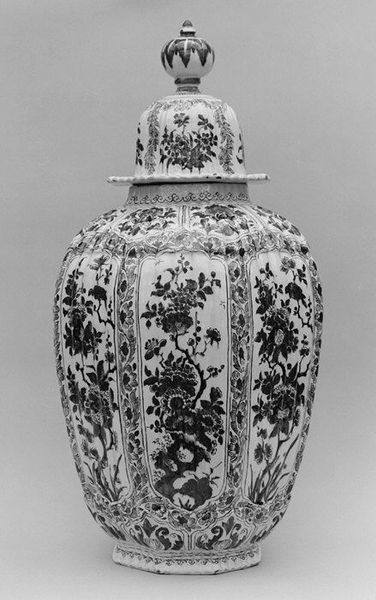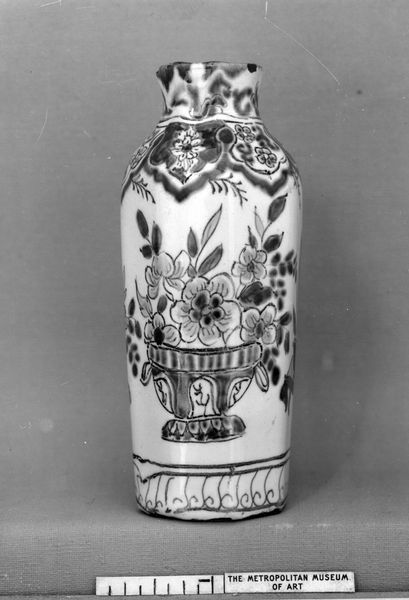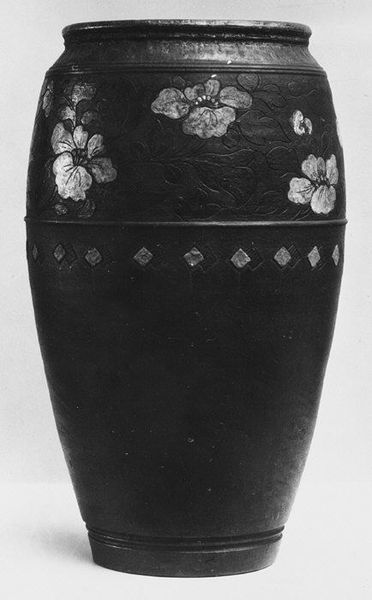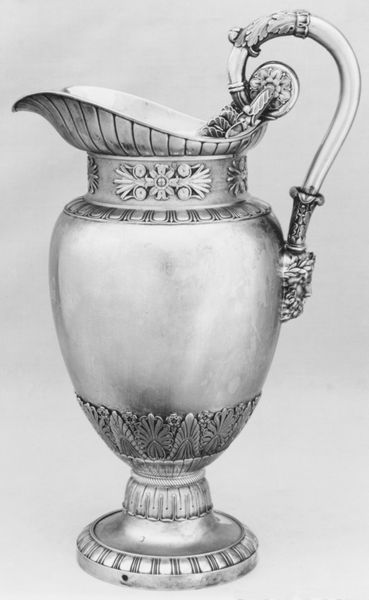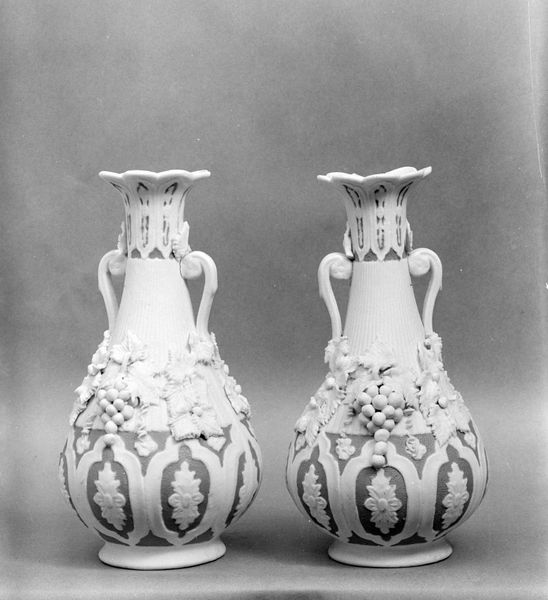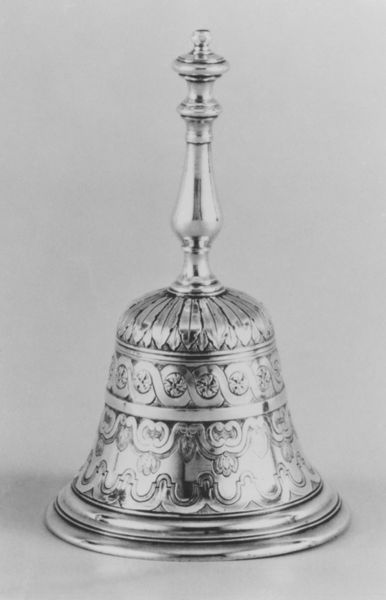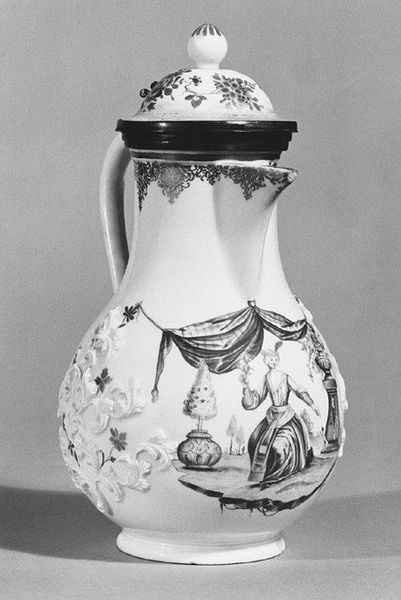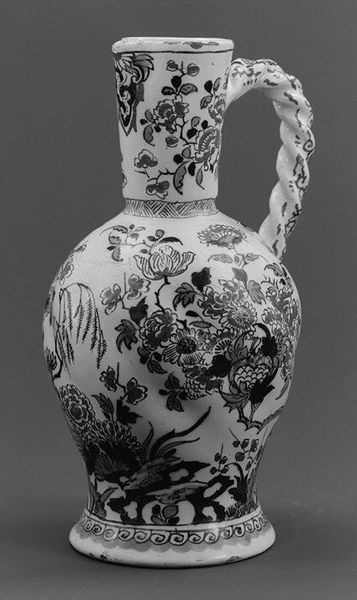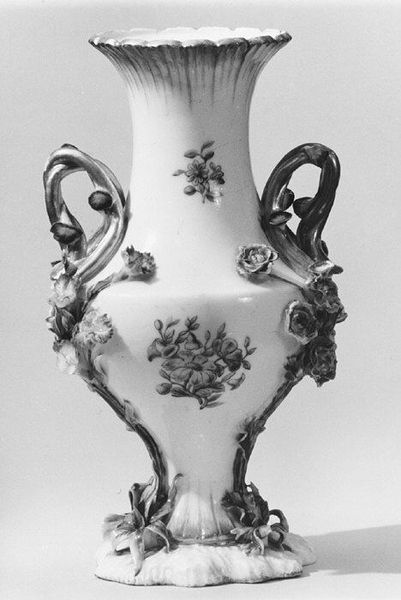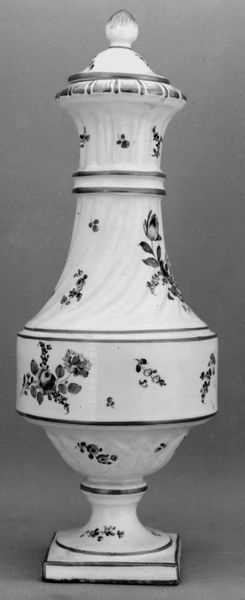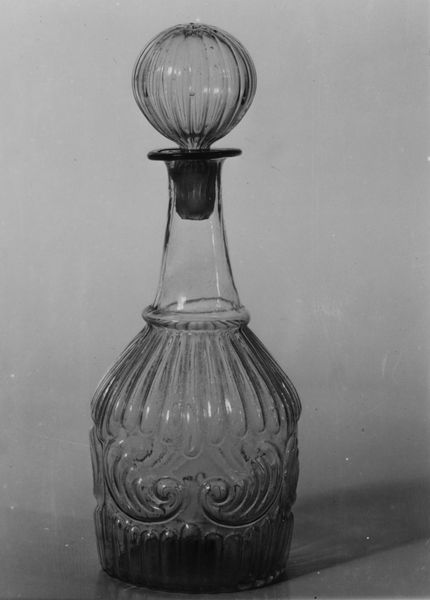
glass, sculpture
#
art-nouveau
#
glass
#
stoneware
#
sculpture
#
decorative-art
Dimensions: H. 14 in. (35.6 cm)
Copyright: Public Domain
Curator: Here we have a glass vase crafted by Reading Artistic Glass Works between 1884 and 1886. The vessel stands as a remarkable example of Art Nouveau decorative art. Editor: The distribution of visual weight feels imbalanced. There’s a top-heavy quality caused by the concentration of intricate swirl patterns contrasted with a looser, scale-like motif on the vase's bulbous body. Curator: Indeed, the structure presents a fascinating dichotomy. Notice the vertical striations converging towards the flared mouth—they create an ascending visual rhythm, juxtaposed against the circular, almost cellular pattern enveloping the wider body. The neck is cinched by a simple band— Editor: Which provides a necessary pause. The ring could represent constraints put upon us by social convention and then released by what the vase holds—life and celebration of spirit, expressed in the widening neck. The dot patterning reminds me of stylized snakeskin—suggesting cycles of transformation. Curator: That connection aligns nicely with Art Nouveau's thematic embrace of natural motifs. The repeated scale design generates an impression of organized growth or a structured ecosystem; a metaphor for vitality constrained within a vessel, perhaps? What of the palette itself? Its effect, despite being monochrome, seems so textured. Editor: The interplay of light and shadow does impart significant dimensionality. It triggers subconscious allusions to natural surfaces like weathered stones. One finds evidence here for how artists in every time and place, even working in an abstract vein, cannot help but summon images that reflect the broader natural world in our awareness. Curator: That brings a sense of organic inevitability to the design and explains some of the vase's allure; it resonates profoundly beyond surface aesthetics. Its value stems, then, not only from aesthetic features but deeper cultural echoes as well. Editor: It shows us our own search for symbols by turning what we might call background patterning into figures pregnant with meaning. It lets the mute vase itself find voice to remind us of stories—a way to feel connected in both form and memory.
Comments
No comments
Be the first to comment and join the conversation on the ultimate creative platform.
